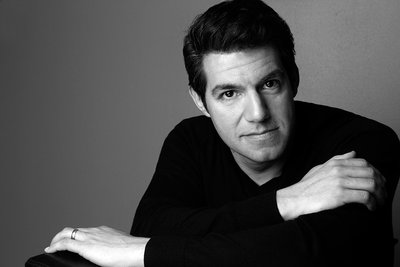
In this month’s Symphony magazine cover story detailing the resurgence of new music in American orchestras, three of the dozen or so featured orchestras — in Baltimore, Nashville and Eugene (the only Oregon orchestra listed) — are led by current or former Eugene Symphony music directors.
Such recognition is a testament to the Eugene Symphony Orchestra’s half-century of punching above its weight — distinguishing itself from other middling-sized orchestras via its emphasis on contemporary music, along with its penchant for finding up-and-coming conductors who can handle both the music and communicating its vision to the community.
Particularly after visionary music director Marin Alsop ascended the podium in 1989, the ESO’s programming of contemporary (and especially American) music put it — and Alsop, who became the first woman music director of a major American orchestra when she took the Baltimore position — on the national map.
While the usual 19th-century classics have always dominated the repertoire, Alsop’s successors Miguel Harth-Bedoya, and especially Giancarlo Guerrero, continued to feature more 20th- and 21st-century music than typical American orchestras.
And although contemporary sounds comprise only a tiny fraction of the total minutes of music the ESO has played since Danail Rachev arrived as music director, new music is beginning to flow again.
For this 50th-anniversary season, Rachev features music by five living composers, including Eugene’s own nationally acclaimed composer Robert Kyr in the season’s closing concert. That’s far short of the 22 works by living composer Alsop is featuring in Baltimore’s season, but pretty good for a smaller orchestra with a much shorter season.
“The arc of the season is an exploration of America and where its culture comes from,” explains ESO executive director Scott Freck. “All these different cultures mix together and we add our special sauce.”
The new music — and new ways of presenting it — also shows where American culture is today. “In these economically tough times, we have to diversify and get experimental,” Freck says, including perhaps working with young composers (as it does now with young instrumentalists), expanding its music education programs and “making the concert experience more relevant” to today’s audiences.
That forward-looking vision appears to be drawing the younger audiences that classical music institutions crave. Student ticket sales for last year’s two concerts that emphasized new music (one featuring contemporary composer Avner Dorman and another highlighting jazz sax master Branford Marsalis) doubled and tripled the usual numbers, according to the Symphony magazine story.
Eugene listeners have a history of open-mindedness to musical innovation, but the determination to move forward instead of staying mired in the past starts at the top. As Freck told Symphony about ESO’s renewed commitment to new music: “You have to believe that it matters.”